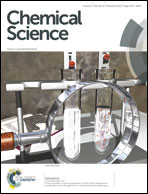Recent advances on ultrafast X-ray spectroscopy in the chemical sciences
Abstract
As an X-ray method for capturing transient structures of molecules during chemical reactions, X-ray transient absorption (XTA), or laser-initiated time-resolved X-ray absorption spectroscopy, has seen its capabilities greatly expanded over the past decade. XTA, which includes X-ray absorption near edge structure (XANES) and X-ray absorption fine structure (XAFS), has evolved beyond proof-of-concept studies and has been increasingly used to interrogate real chemical problems. Advances in ultrafast laser technology, pulsed X-ray sources in synchrotron facilities, as well as the frontier femtosecond X-ray pulses from X-ray free electron lasers have opened up new opportunities to gain a new fundamental description of the chemical sciences. This review reports historical and recent advances in XTA, particularly in its chemical applications, and is focused on (1) an overview of XTA capabilities in comparison to the related techniques of X-ray emission spectroscopy (XES) and resonant inelastic X-ray scattering (RIXS), (2) general chemical properties that can be investigated by the XTA method, (3) chemical systems studied by XTA investigations such as transition metal complexes, metalloproteins and hybrid systems, and (4) summary and perspectives.


 Please wait while we load your content...
Please wait while we load your content...